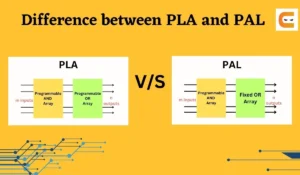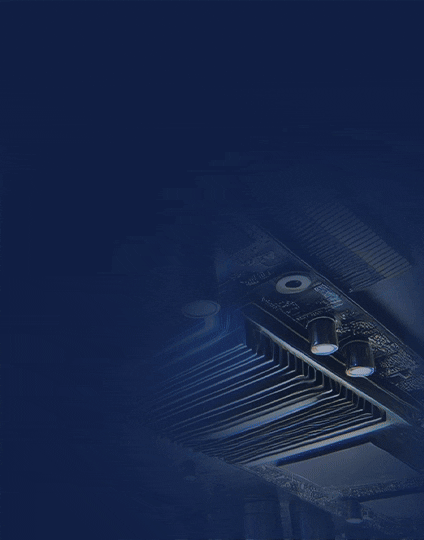In the world of digital electronics, programmable logic devices have revolutionized the way complex circuits and systems are designed and implemented. Two popular types of programmable logic devices are CPLD (Complex Programmable Logic Device) and FPGA (Field-Programmable Gate Array). While they may seem similar at first glance, understanding the key differences between CPLD and FPGA is crucial for engineers and designers when selecting the most suitable technology for their projects.
Overview of CPLD
A. Definition and Characteristics of CPLD
- CPLD stands for Complex Programmable Logic Device.
- It is a type of programmable logic device that integrates multiple programmable logic blocks and interconnects on a single chip.
- CPLDs are used to implement digital logic circuits and can be reprogrammed multiple times.
- They offer a flexible and cost-effective solution for designing complex digital systems.
B. Architecture of CPLD
- CPLDs consist of two main components: programmable logic blocks (PLBs) and interconnect resources.
- PLBs are composed of lookup tables (LUTs), flip-flops, and other supporting elements.
- The interconnect resources enable the connection between the PLBs and allow the flow of signals within the device.
- The architecture of CPLDs can vary, but they generally have a hierarchical structure with a global interconnect network.
C. Typical Applications of CPLD
CPLDs are commonly used in a wide range of applications, including:
- Industrial control systems: CPLDs can be used for implementing control logic in various industrial automation applications.
- Communications systems: They are used in networking equipment, such as routers and switches, for implementing protocol handling and interface control.
- Automotive electronics: CPLDs find applications in automotive systems for functions like engine control, transmission control, and safety systems.
- Consumer electronics: They can be used for implementing functions in consumer devices, such as gaming consoles and multimedia systems.
- Test and measurement equipment: CPLDs are utilized in test and measurement devices for signal processing and control functions.
D. Advantages and Disadvantages of CPLD
Advantages:
- Flexibility: CPLDs offer high flexibility as they can be reprogrammed multiple times to adapt to different logic configurations.
- Integration: They integrate multiple logic blocks on a single chip, reducing the need for external components and simplifying board designs.
- Fast development cycles: CPLDs allow for quick prototyping and development iterations due to their programmable nature.
Disadvantages:
- Limited capacity: CPLDs have a limited number of logic elements compared to FPGAs, which can restrict the complexity of designs they can accommodate.
- Lower performance: CPLDs generally have lower clock frequencies and slower propagation delays compared to FPGAs.
- Limited resources: Some CPLDs may have fewer available resources and features compared to FPGAs, limiting the design possibilities.
Overview of FPGA
A. Definition and characteristics of FPGA
- FPGA stands for Field-Programmable Gate Array.
- It is a semiconductor device that can be programmed and reprogrammed after manufacturing.
- FPGAs contain an array of programmable logic blocks interconnected by configurable routing resources.
- They provide flexibility in designing digital circuits and systems.
B. Architecture of FPGA
- The architecture of an FPGA consists of three main components: configurable logic blocks (CLBs), interconnects, and input/output blocks (IOBs).
- CLBs are the building blocks of FPGAs and are composed of look-up tables (LUTs) that can implement any Boolean logic function, as well as flip-flops for storing intermediate results.
- The interconnects provide the routing resources that connect the CLBs and IOBs, allowing for complex interconnections.
- IOBs facilitate communication between the FPGA and external devices, providing input and output interfaces.
C. Typical applications of FPGA
FPGAs find applications in a wide range of industries and domains due to their versatility and programmability. Some common applications of FPGAs include:
- Digital signal processing (DSP): FPGAs can implement high-speed DSP algorithms for tasks such as image and video processing, audio processing, and communications.
- Embedded systems: FPGAs are used in embedded systems for rapid prototyping, as they can be reprogrammed to accommodate changing requirements.
- Aerospace and defense: FPGAs are employed in aerospace and defense applications for tasks such as radar processing, communication systems, and cryptography.
- High-performance computing: FPGAs can be used as accelerators in high-performance computing systems, providing parallel processing capabilities.
- Internet of Things (IoT): FPGAs enable the implementation of custom logic and interfaces in IoT devices, enhancing their functionality and connectivity.
D. Advantages and disadvantages of FPGA
Advantages
- Flexibility: FPGAs allow designers to implement custom logic functions and modify designs as needed.
- Time-to-Market: FPGAs enable rapid prototyping and quick iterations in the development process.
- Performance: FPGAs can achieve high-speed processing and parallelism.
Disadvantages
- Power Consumption: FPGAs tend to consume more power compared to CPLDs.
- Complexity: Designing for FPGAs can be more complex due to the availability of numerous resources and routing options.
- Cost: FPGAs can be more expensive compared to CPLDs, especially for large-scale applications.
Key Differences between CPLD and FPGA
A. Configurability
CPLD (Complex Programmable Logic Device):
- CPLDs have a fixed structure with a pre-defined number of logic blocks and interconnects.
- The configuration memory in CPLDs is based on non-volatile technologies like Flash or EEPROM, allowing the device to retain the configuration even when powered off.
- CPLDs are suited for designs that require relatively simple logic functions and do not need frequent reconfiguration.
FPGA (Field-Programmable Gate Array):
- FPGAs are highly configurable and offer a more flexible structure than CPLDs.
- The configuration memory in FPGAs is based on volatile technologies like SRAM, which means the configuration must be loaded each time the device is powered on.
- FPGAs are ideal for complex designs that require a high degree of flexibility and frequent reconfiguration.
B. Complexity and Capacity
CPLD:
- CPLDs typically have a smaller number of logic elements and limited resources compared to FPGAs.
- They are better suited for small to medium-sized designs and applications that require lower logic complexity.
- CPLDs often have a fixed number of I/O pins, which can limit the number of external connections.
FPGA:
- FPGAs offer a higher level of complexity and capacity with a large number of logic elements and abundant resources such as memory blocks, DSP units, and specialized features.
- FPGAs can handle large and complex designs, making them suitable for high-performance applications.
- FPGAs provide a wide range of I/O options, allowing for more extensive external connections.
C. Timing and Performance
CPLD:
- CPLDs generally have slower maximum clock frequencies and higher propagation delays compared to FPGAs.
- They are suitable for designs that do not have stringent timing requirements.
- CPLDs excel in applications where speed is not a critical factor, such as glue logic or simple control functions.
FPGA:
- FPGAs offer faster maximum clock frequencies and lower propagation delays, making them suitable for designs with strict timing constraints.
- They are capable of implementing complex algorithms and high-speed interfaces, making them ideal for applications such as signal processing, networking, and video processing.
D. Power Consumption
CPLD:
- CPLDs tend to have lower power consumption compared to FPGAs.
- They are often used in battery-powered devices or applications with strict power constraints.
- CPLDs consume minimal power when idle or in standby mode.
FPGA:
- FPGAs generally consume more power compared to CPLDs due to their larger size and more extensive resources.
- They are commonly used in applications where performance takes precedence over power efficiency, such as data centers or high-performance computing.
E. Cost Considerations
CPLD:
- CPLDs are generally more cost-effective than FPGAs.
- They are suitable for budget-conscious projects or applications where lower complexity suffices.
- CPLDs offer a lower upfront cost and can be a viable option for small-scale designs.
FPGA:
- FPGAs tend to be more expensive than CPLDs due to their higher complexity and capabilities.
- They are preferred for projects that require advanced features, high-speed processing, or large-scale designs.
- FPGAs may incur higher development costs but can provide better performance and flexibility in the long run.
Understanding these key differences between CPLD and FPGA is crucial for selecting the right device for a specific application. Evaluating the configurability, complexity, timing requirements, power constraints, and cost considerations will help engineers make informed decisions and optimize their designs accordingly.
Choosing between CPLD and FPGA
Choosing between CPLD and FPGA for a specific application requires careful consideration of various factors. Each technology has its strengths and weaknesses, and understanding the specific requirements of the design can help make an informed decision.
A. Application-specific considerations
- Size and complexity of the design:
- CPLDs are generally suitable for smaller designs with fewer logic elements and simpler control functions.
- FPGAs offer greater capacity and flexibility, making them suitable for larger and more complex designs.
- Performance requirements:
- CPLDs typically have lower maximum clock frequencies and longer propagation delays compared to FPGAs.
- FPGAs excel in applications that demand high-speed performance and have stringent timing requirements.
- Power constraints:
- CPLDs generally consume lower static and dynamic power compared to FPGAs.
- If power consumption is a critical consideration for the application, CPLDs might be a more suitable choice.
- Cost considerations:
- CPLDs are often more cost-effective for small-scale designs due to their lower price range.
- FPGAs tend to be more expensive but offer greater resources and features, making them cost-effective for larger and more complex designs.
B. Evaluation and decision-making process
- Identifying design requirements:
- Clearly define the specific requirements of the design, such as size, performance, power consumption, and available resources.
- Assessing available resources:
- Evaluate the resources and capabilities of both CPLDs and FPGAs, considering factors such as the number of logic elements, I/O pins, memory, and available features.
- Considering future scalability:
- If the design may require future expansion or modifications, consider the scalability and flexibility of both CPLDs and FPGAs to accommodate future needs.
- Cost-benefit analysis:
- Perform a cost-benefit analysis, considering the initial cost, the total cost of ownership, and the added value that each technology provides for the specific application.
It is essential to strike a balance between the requirements of the design, the available resources, performance needs, power constraints, and cost considerations.
Conducting thorough research and consulting with experts in the field can help in making an informed decision.
Conclusion
- Choosing between CPLD and FPGA involves evaluating the specific requirements of the application and considering factors such as size, complexity, performance, power consumption, and cost.
- CPLDs are suitable for smaller designs with simpler control functions, lower power consumption, and cost-effective solutions.
- On the other hand, FPGAs excel in larger and more complex designs, and high-performance applications, and offer greater flexibility and resources.
- By carefully considering these factors and conducting a comprehensive evaluation, designers can make an informed decision and select the right technology for their specific needs.


![What is FPGA Introduction to FPGA Basics [2023] computer-chip-dark-background-with-word-intel-it](https://fpgainsights.com/wp-content/uploads/2023/06/computer-chip-dark-background-with-word-intel-it-300x171.jpg)









